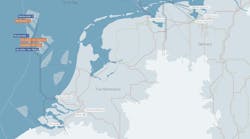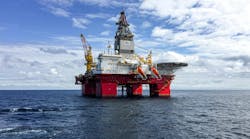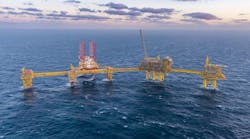Offshore staff
STAVANGER, Norway – The US National Aeronautics and Space Administration (NASA) has used Norway’s annual offshore North Sea spill exercise to test the use of Uninhabited Aerial Vehicle Synthetic Aperture Radar (UAVSAR) to distinguish different types of oil slicks.
To calibrate UAVSAR returns, Norway released emulsions of differing thicknesses so that the scientists could have a known range of conditions to compare results against. The experiment also tested the instrument’s ability to distinguish between petroleum and plant-based oil, found in algal blooms.
NASA found during previous Gulf of Mexico oil spill observations that UAVSAR could not only “see” the smoothing affect oil has on the sea surface, but also could indicate the thickness of a slick based on radar wave reflection differences between seawater and oil slicks.
Oil on water was held at the abandoned Frigg oil field, about 140 mi (230 km) northwest of Stavanger.
06/19/2015




